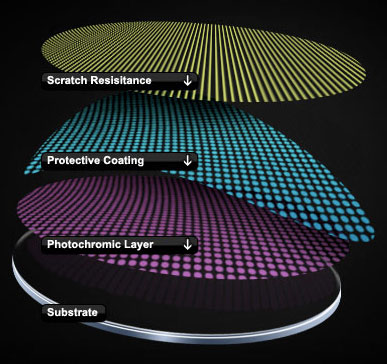 |
Trans-Bonding takes place when scientists apply proprietary surface treatments in a series of layers. Trans-Bonding provides outstanding adhesion, scratch resistance, optical purity, and photochromic performance.
The imbibition process involves applying the photochromic dye to the front surface of the lens, then processing it to penetrate the lens material. Using this method, the depth of photochromic pigments is 50 times the size of a scratch-resistant coat.
Both the imbibing and Trans-Bonding technologies will provide the same color regardless of lens thickness differences caused by lens prescriptions.













